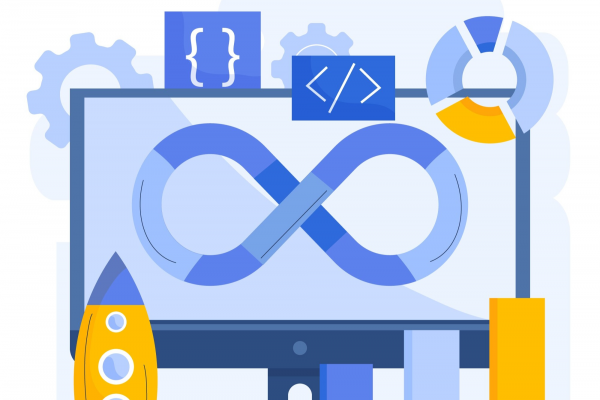In today’s fast-paced digital landscape, collaboration between IT and business has become vital for organizations aiming to stay competitive. However, the inherent differences in mindset, objectives, and priorities often create a gap between these two crucial functions. Product engineering, a strategic approach to software development, has emerged as a powerful catalyst for bridging this gap. By fostering collaboration, aligning goals, and driving innovation, engineering product services are revolutionizing the way IT and business work together.
Understanding the Gap
The gap between IT and business is primarily rooted in their distinct perspectives. IT focuses on technology infrastructure, security, and operational efficiency, while your business focuses on market demands, customer satisfaction, and revenue generation. This misalignment can lead to delays in project delivery, misinterpretations of requirements, and a lack of transparency.
The Role of Product Engineering
Product engineering brings a fresh perspective to software development by blending technical expertise with business acumen. It emphasizes understanding customer needs, aligning technology with strategic objectives, and delivering value-driven solutions. Product engineering teams collaborate closely with stakeholders from both IT and business domains to ensure a holistic approach that addresses both technical and market requirements.
Product engineering acts as a facilitator for effective communication and collaboration. Product engineering teams play a vital role in translating customer needs into tangible software solutions. By leveraging their technical expertise and business acumen, they can align technology with your organization’s strategic objectives. This alignment not only ensures that the software meets the technical requirements but also addresses market demands, enhancing the overall value proposition of the product.
Through close collaboration with stakeholders from both IT and business domains, product engineering teams are able to create a holistic approach that considers the diverse perspectives and requirements of all involved parties. By actively involving stakeholders throughout the software development lifecycle, engineering product services foster a shared understanding and ownership, ultimately delivering successful and customer-centric solutions.
Collaboration and Communication
Successful collaboration between IT and business is crucial for project success. Product engineering encourages close cooperation and open communication channels between these two functions. Regular meetings, workshops, and joint planning sessions enable the exchange of ideas, facilitate shared understanding, and foster a culture of collaboration. This collaboration enhances transparency, reduces misunderstandings, and builds trust between IT and business teams.
Agile Methodologies and Cross-Functional Teams
Product engineering embraces agile methodologies, such as Scrum or Kanban, to enable iterative and incremental development. These methodologies emphasize cross-functional teams that include representatives from both IT and business domains. By working together throughout the development process, cross-functional teams ensure that business objectives are understood, technical challenges are addressed, and the final product meets market expectations.
Scrum and Kanban provide a framework for iterative and incremental development for engineering product services, allowing for flexibility and adaptability in response to evolving requirements. Cross-functional teams comprising members from IT and business domains create a dynamic environment where different perspectives and expertise converge. This collaboration enables a deeper understanding of business objectives and customer needs, fostering effective communication and problem-solving.
By working closely together, cross-functional teams ensure that technical challenges are identified and resolved in a timely manner while also aligning the final product with market expectations. This collaborative approach promotes transparency, efficiency, and, ultimately, the successful delivery of high-quality software solutions.
User-Centric Design and Rapid Prototyping
Product engineering places significant emphasis on user-centric design and rapid prototyping. By involving stakeholders from the business side in the design process, IT teams gain a deeper understanding of user needs, pain points, and desired outcomes. Rapid prototyping enables quick validation of ideas, early feedback gathering, and the identification of potential improvements. This approach reduces the risk of developing solutions that do not align with business goals or fail to meet user expectations.
Driving Innovation and Business Growth
Product engineering plays a critical role in driving innovation and business growth through close collaboration and alignment of IT and business objectives. By incorporating feedback loops, conducting regular market research, and leveraging emerging technologies, product engineering teams can identify new opportunities and stay ahead of the competition. The result is the development of innovative products and services that meet customer demands and enable your organization to seize new business opportunities.
Product engineering fosters a culture of experimentation and agility within your company. By embracing a mindset of continuous improvement, product engineering teams encourage the exploration of new ideas and the implementation of innovative solutions. Through iterative development cycles and a willingness to take calculated risks, your company can adapt quickly to changing market dynamics and customer needs. This agility enables them to stay responsive and competitive in a rapidly evolving business landscape.
Product engineering teams actively seek out emerging technologies and industry trends, leveraging them to drive innovation and unlock new opportunities. By proactively staying abreast of technological advancements, your organization can position itself as an industry leader and pioneer in its respective domains.
Conclusion
STL Digital’s product engineering serves as a powerful bridge between IT and business, bringing them together by fostering collaboration, aligning goals, and driving innovation. By embracing product engineering principles, your company can bridge the gap that often exists between these two functions and unlock new avenues for success. The alignment of technology with business objectives, enhanced communication, and a user-centric approach are all essential elements that lead to the delivery of value-driven solutions and propel your organization towards sustained growth in the digital age.
FAQs
- How does product engineering contribute to improving the overall customer experience?
Engineering product services focus on understanding customer needs and aligning technology solutions accordingly. By involving business stakeholders in the design process, product engineering teams can gain insights into customer pain points and preferences. This user-centric approach ensures that the final product or service meets customer expectations, resulting in an enhanced customer experience.
- How does product engineering help organizations adapt to changing market demands?
Product engineering embraces agile methodologies and iterative development, allowing companies to respond to market demands quickly. By collaborating closely with business teams, IT can stay informed about shifting market trends and customer preferences. This knowledge enables product engineering teams to adapt and deliver solutions that address evolving market demands, ensuring your organization remains competitive.
- Can product engineering help companies reduce time-to-market for new products or services?
Certainly, product engineering emphasizes rapid prototyping, which enables companies to validate ideas and gather early feedback from stakeholders. By quickly iterating on prototypes, IT and business teams can identify potential improvements and make necessary adjustments before the final product is developed. This iterative approach significantly reduces time-to-market, allowing your organization to seize opportunities and gain a competitive edge.
- How does product engineering contribute to fostering innovation within organizations?
Product engineering promotes a culture of innovation by encouraging collaboration and cross-functional teamwork. By bringing together IT and business expertise, product engineering teams can leverage their combined knowledge to identify emerging technologies, market trends, and customer demands. This collaborative approach, combined with a focus on continuous improvement, enables your company to drive innovation and develop cutting-edge solutions.
- Can product engineering help bridge the gap between IT and business when it comes to decision-making processes?
Yes, product engineering facilitates a shared understanding between IT and business by fostering open communication channels and involving stakeholders from both sides in decision-making processes. This collaboration ensures that technical considerations and business objectives are taken into account, leading to more informed decision-making. By aligning IT and business priorities, product engineering helps bridge the gap and enables effective decision-making that benefits your entire organization.



